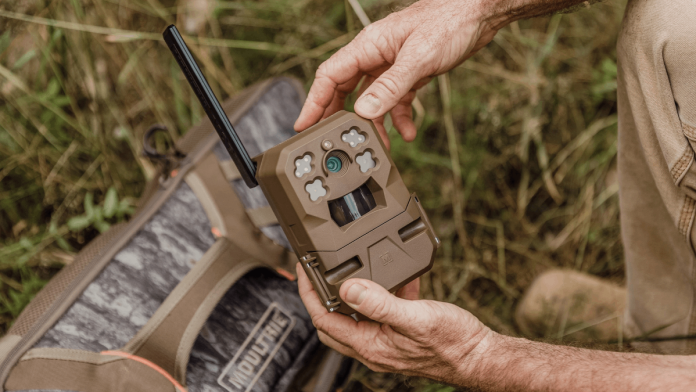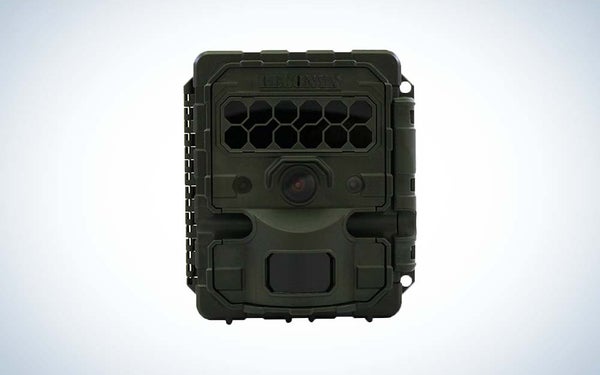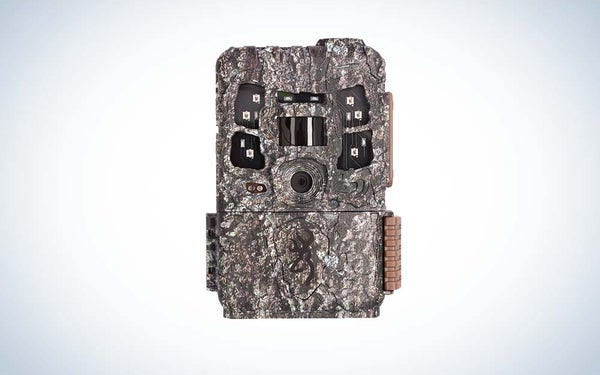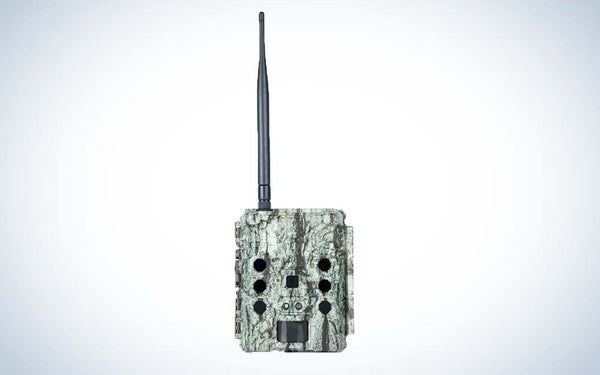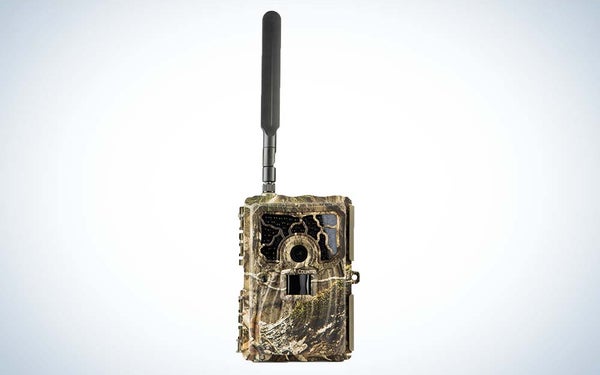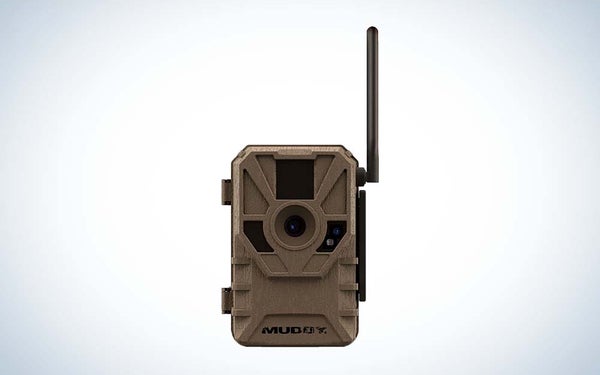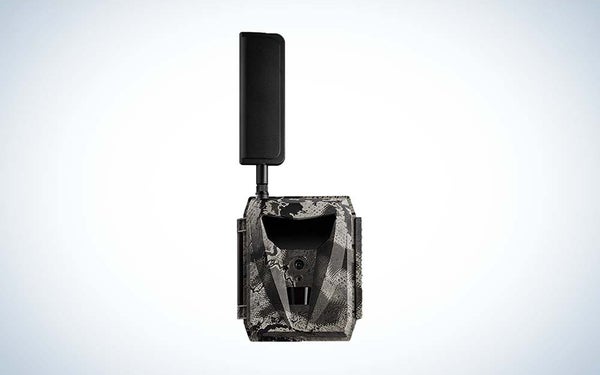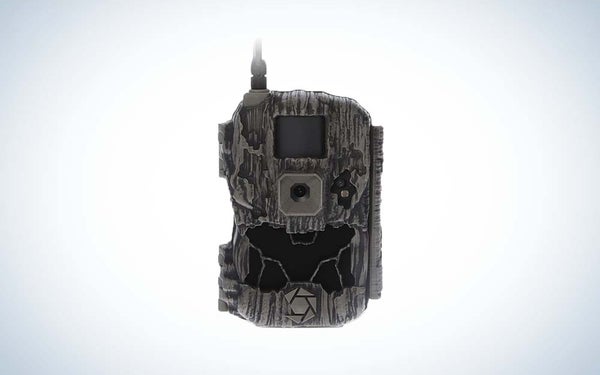We may earn revenue from the products available on this page and participate in affiliate programs. Learn more ›
Updated Mar 16, 2023 11:27 AM
We have entered a golden age when it comes to cellular trail cameras. Only a few years ago, a mere handful of makers were kicking out wireless cams, and even fewer were producing models that made you say, “Wow!” These days, every cam manufacturer worth its salt not only has a wireless cam in its lineup, but has improved significantly on earlier models.
Like computers, smartphones, and everything else powered by silicon chips, wireless cameras are way better than in years past. Pics and videos get sharper and clearer. Apps are packed with more (and more incredible) features. Maybe most important, prices are settling in a neighborhood that most of us can afford. Still, in a tight economy, the decision to drop anywhere from a hundred to several hundred bucks on yet another trail cam, and which one to spend it on, deserves serious consideration. So, we’ve done a bunch of the considering for you. After weeks of setting up and testing the latest models, we’ve cut through the advertising hype to pick the best cellular trail cameras.
The Best Cellular Trail Cameras
The Rest of the Best Cellular Trail Cameras
How We Tested Cellular Trail Cameras
I installed batteries, an SD card (plus a SIM if required), and downloaded the correct app to pair my camera with my phone. I evaluated the simplicity and clarity of setup instructions, as well as noting the features that were available and how easy they were to understand and access. I then set up the cameras in my yard to evaluate pic quality, trigger speed, and detection range by walking in front of them at pre-measured distances, day and night. I also deployed cams on several mock scrapes to check their performance on wild deer and any other critters that might show up. I gave a special nod to any camera(s) that performed well under these “real world” conditions. Finally, the value was considered when choosing between cameras; companies that pair solid performance with a reasonable price deserve a shoutout.
The Best Cellular Trail Cameras: Reviews & Recommendations
Best Overall: Reconyx Hyperfire 2 Cellular
Specs
- Trigger speed: 0.2 seconds
- Detection range: 150 ft.
- Power:12 AA batteries
Pros
- Unmatched trigger speed and detection range
- Picture clarity is easily the best of the test
- Videos are sharp and clear
- 5-year warranty is the best in the industry
Cons
- Expensive
- Can’t send videos
- Some complications in pairing the phone to the camera

When your camera is at least $100 more than everyone else’s, it better be really good. The Hyperfire 2 is—and it’s backed with a 5-year warranty. The trigger speed and detection range were easily the best in the test and verified a belief I’ve held since my pre-cell cam days; I’ve used Reconyx conventional trail cameras for years and have always operated on the tenet that, if I really want a great pic of a good buck, use Reconyx. This holds true for the Hyperfire 2. The Hyperfire images were very sharp (probably due to the zippy trigger speed) and the setup is seamless. I was ready to believe that a high-dollar camera would be difficult to set up and run; I was wrong. This is a high-performance workhorse that’s worth the extra bucks for the initial purchase if you can afford it and the five-year warranty is commendable. If past experience with trail cams (conventional or wireless) is any indicator, something is bound to go wrong at some point and a company that stands by its product is worth noting. Plus, the higher price point was easier to swallow when I realized that data plans are very reasonable.
Best Value: Browning Defender Pro Scout Max
Specs
- Trigger speed: 0.25 seconds
- Detection range: 120 feet
- Power: 8AA batteries
Pros
- Second-best trigger speed in the test
- Simple to set up and use
- Excellent picture and video quality
- Battery life on Brownings is typically among the best in the category
Cons
- Not the best reception in all areas (Browning wireless models have external antennas that allow installation of a booster for areas with iffy reception)

The solid performance of this camera didn’t surprise me one bit. The pics are sharp and clear (some of the best night pics I’ve seen, across the board) and the trigger speed rivals the Reconyx. Plus, the detection range and battery life is among the best in the test. While I haven’t run this camera for a long time, there’s no reason to believe this camera will be any different from its predecessors when it comes to battery conservation (a real consideration when battery prices are up 30% or more). Browning cams are simply among the best in the business due to their reliability, and if I were going to run a string of wireless cams, I wouldn’t hesitate to buy a bunch of Defender Pro Scouts. This camera has bulletproof performance at an amazingly affordable price.
Best No-Glo Cam: Bushnell CelluCore 30 No-Glow
Specs
- Trigger speed: 0.2 seconds
- Detection range: 80 feet
- Power: 12 AA batteries
Pros
- Good trigger speed
- Solid daytime pics
- Internal screen viewer to aid setup
- Among the most simple setups in the test
Cons
- Fairly spendy in comparison
- Night pics suffer a bit at longer ranges
Bushnell cameras have shown nothing but increased improvement in the last few years, and this model exemplifies that trend. The nice pics and easy setup are a huge plus for Bushnell. The impressive 0.2-second trigger speed helps capture sharp images and can keep up with fast-moving deer. Plus, the fast image recovery time recovery and subtle infrared flash elevate this cam to the next level. The only thing keeping this camera from the top models is a moderate detection range, and the data plans are, well, not much.
Covert Code Black Select
Specs
- Trigger speed: 0.27
- Detection range: 60 feet
- Power: 12 AA batteries
Pros
- Dual modem allows the camera to select the best carrier for top pics
- Good trigger speed
- Rugged case
- Easy setup
Cons
- Above average price point
- Detection range is decent but not stellar
- Some grainy photos, especially at night
This is one of the best Covert cameras in recent memory. The trigger speed is quite good and the dual modem–which simply picks the best carrier in the area–may not be a genius stroke, but it’s close. Some of my night pics were a little grainy, probably because of the combination of no-glow flash and average detection/flash range. I liked the rugged and well-designed case, and the setup was pretty seamless. The only things keeping this camera from the top spot were the lower quality night pics and the price point.
Moultrie Mobile Edge
Specs
- Trigger speed: .85 seconds
- Detection range: 80 feet
- Power: 12AA batteries
Pros
- Amazing price
- Excellent app
- Easy and seamless setup
Cons
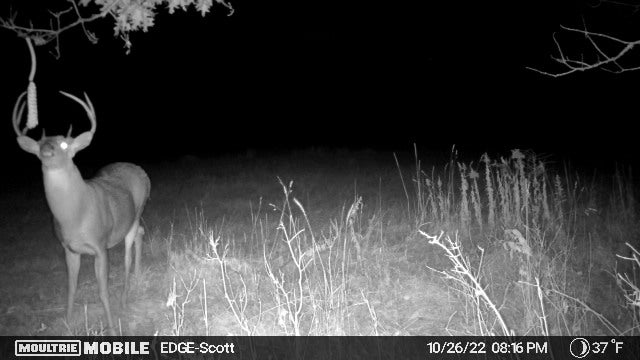
Moultrie’s app is one of the coolest out there with features like image recognition (so you can quickly sort bucks from does, for example) and activity recording (which allows you to identify top movement times and other useful info) as well as unlimited cloud storage. And at less than a C-note, it’s tough to argue against this being one of the best-value cellular cams out there. Of course, important features like trigger speed suffer significantly, but in the right setups (mock scrapes or bait piles) the Edge should perform just fine. We also took a closer look at the new Moultrie Edge after the test.
Muddy Manifest 2.0
Specs
- Trigger speed: 0.8 seconds
- Detection range: 80 feet
- Power: 8AA batteries
Pros
- Super simple setup
- Solid day pics
- Reasonable price point and data plan
Cons
If you’ve run Stealth cams, you’ll feel comfortable with the Muddy, as they’re built on a similar platform and run off the same app (which is pretty nice, by the way) as Stealth cams. Otherwise, nothing fancy happening here; just a solid wireless camera that takes good pics at close range, delivers them to the app, and doesn’t break the bank. I’ve seen the Muddy on sale for about $100, and if you can get it for that, it’s a solid deal.
Spypoint Flex
Specs
- Trigger speed: .03 seconds
- Detection range: 100 feet
- Power: 8 AA batteries
Pros
- Good trigger speed
- Solid detection range
- Good image quality
- SIM card adapts to best network
Cons

One of my favorite new cameras in the test, the Flex is innovative for the price. Sure the pics may not compete with a Browning or Reconyx, but they’re plenty good for most applications, and the trigger on the Flex is surprisingly quick. Even better, the dual SIM system just searches (and keeps searching) for the best provider in the area, then selects that carrier on its own. I also found this to be one of, if not the, simplest cameras to get set up and running. The micro SD card is really my only beef; it’s tiny (and my clumsy fingers aren’t), and requires an adapter to plug it into a laptop or card reader.
Spartan GoCam Ghost
Specs
- Trigger Speed: .4 seconds
- Detection range: 60 feet
- Power: 12AA batteries
Pros
- First camera to offer live-streaming video
- Great image/video quality
- Rugged and durable housing and easy setup
Cons
- Pretty average detection range and trigger speed
- High price point
This is probably the best housing design in the test. In addition to being a cool-looking cam, the Spartan is rugged. It seems like it could get run over by a truck and keep snapping pics and shooting videos. The live-streaming option is decidedly cool for people who need MRI (most recent information) right now….though it may also raise eyebrows for those who question the ethics of trail cams in the first place. (I’m generally not one of them.)
Stealth Cam DS4K Transmit
Specs
- Trigger speed: .3 seconds
- Detection range: 100 feet
- Power: 12AA batteries
Pros
- Quick trigger
- Good detection range
- Great housing
- Simple setup and many programming options
Cons
- Mediocre night pics
- Higher price point
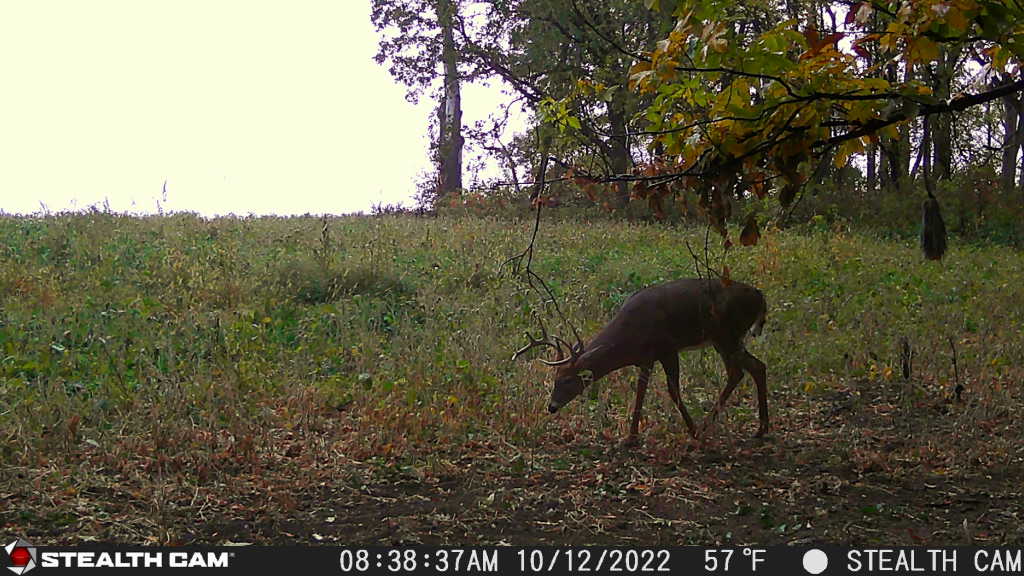
I love the speedy trigger on this camera and the programming options are pretty incredible; four different video resolutions and camera MP options, as well as a burst mode that’s as good as any models (it’ll shoot up to 9 images per triggering event). I also found the camera easy to set up. While the night pics were less than stellar, that’s a small beef. Look for deals on this camera, and you won’t be disappointed.
What to Consider When Choosing The Best Cellular Trail Cameras
Ease of Setup
Most cellular trail camera manufacturers have accepted the fact that not all their customers are 25 and were born with a smartphone in their hand, but some have not. Cellular cams should come with clear instructions and be easy to program and get running. All the cams I tested were run from an app where you set camera commands and settings, and where pics are sent. This is different than the original wireless cams, which typically sent images to the user via text (one of my buddies still refers to wireless cams as “texting cams” for this reason). How easily these apps set up, run, and monitor the camera is important.
Picture Quality
This can be tied into cost (as in, the more you spend, the better the pics), but not always. Trust me on this: After a while, the novelty of getting pics sent to your phone will wear off, and you’ll get irritated by blurred and grainy images. Some people are willing to give cell cams a pass on picture quality because they provide other benefits. I’m not one of them.
Trigger Speed
This is how long it takes the camera to snap a pic (or start shooting video) from when it detects movement. Generally speaking, the faster the better. One-fourth/second (0.25) is about as good as it gets, and a half-second is respectable for most camera setups. Anything much slower than that is decidedly ho-hum, and the camera better be darn good at something else.
Detection Range
This is the maximum distance at which a camera will “sense” a triggering object (hopefully a critter, but weeds and tree branches will also trigger it; something to keep in mind when setting cameras up). Again, as a rule, the greater the distance the better; the camera will get more pics of more animals.
Megapixels
I intentionally left this category out of my final evaluations, as it’s one of the most misunderstood features of trail cams. Manufacturers can exaggerate MP ratings through a process known as interpolation, which digitally adds megapixels to a photo without actually improving the picture. In other words, a 30 MP camera may not have any clearer or better pics than a 3 MP camera. The best way to judge the quality of a camera’s pics is to simply look at the pics.
App Quality and Bonus Features
A basic cell-cam app should make it easy for you to get the camera set up, change settings, and receive photos, but apps that make it especially easy to organize photos or identify trends to nail down daily patterns among the critters your monitoring can be a big plus. By the same token, little hardware extras, like mounts or brackets that help you aim the camera, are an important consideration, too.
Final Thoughts on the Best Cellular Trail Cameras
The Rest of the Best Cellular Trail Cameras
This is easily the best crop of cellular trail cameras I’ve ever tested. Prices are coming down, performance is going up, and user-friendly programming options are better than ever. While I sense that we’re a year or two away from the pinnacle of cell-cam performance, I also feel that waiting for things to get perfect is a big mistake. Today’s wireless cameras simply send more and better pics and videos than they ever have, and ignoring those capabilities will prevent you from enjoying some of the most scouting fun you might have all season. Shop wisely and the camera that perfectly fits your needs can be found in this year’s lineup.

